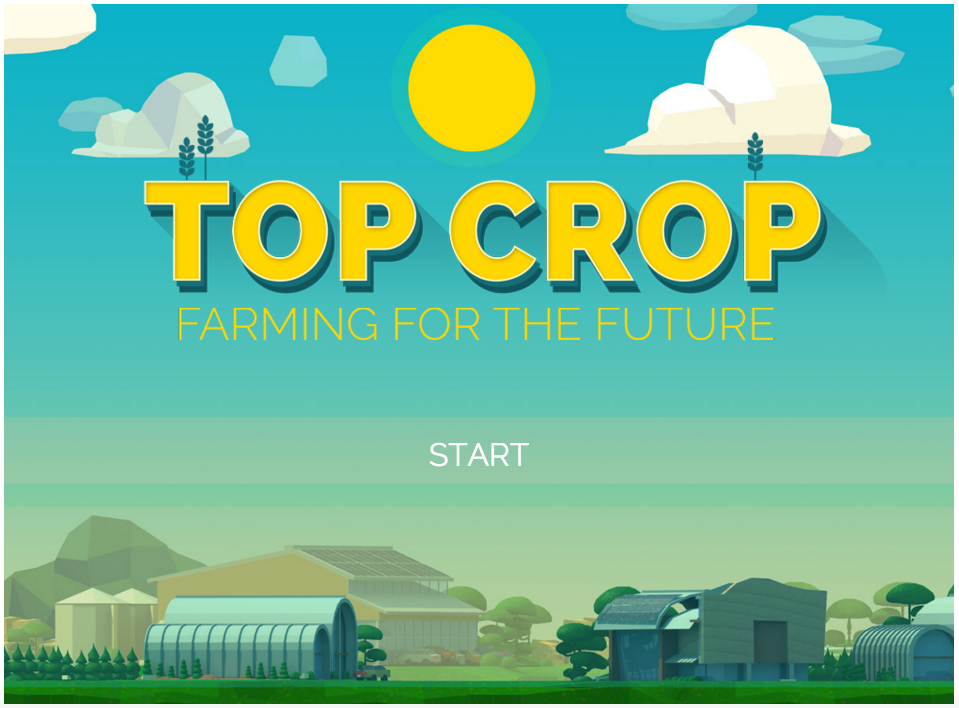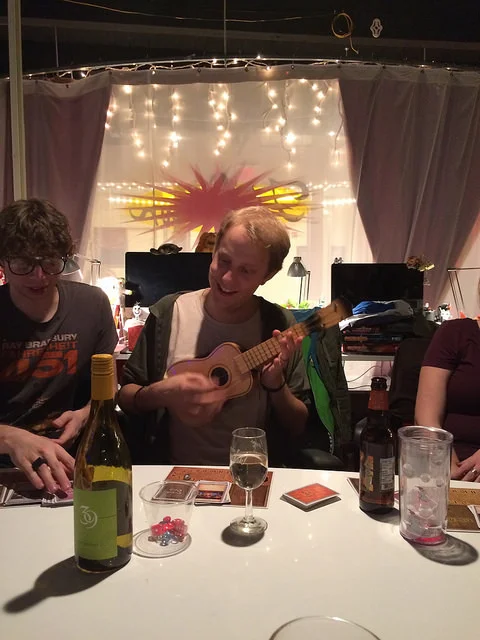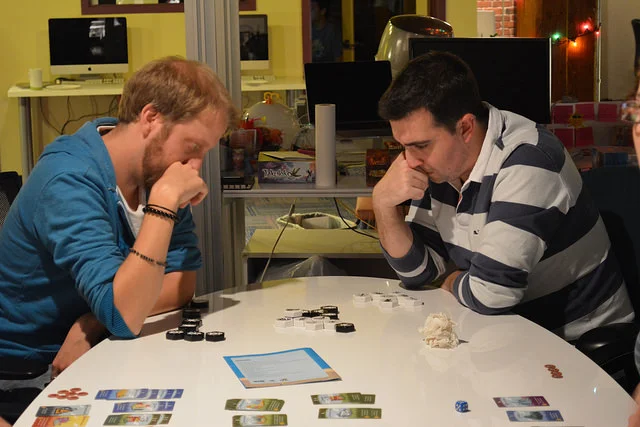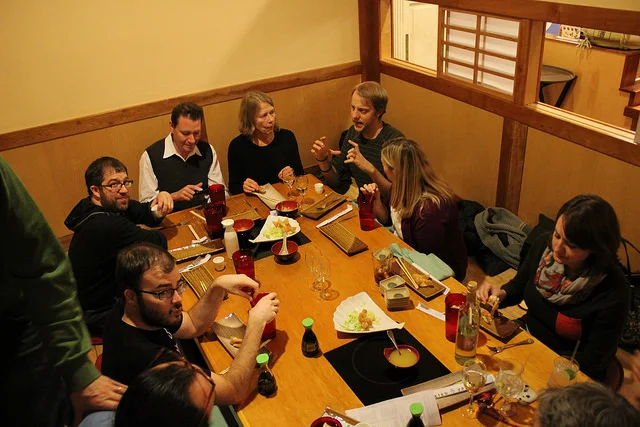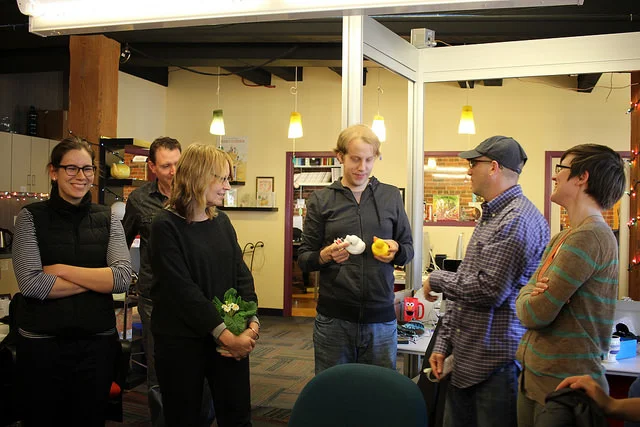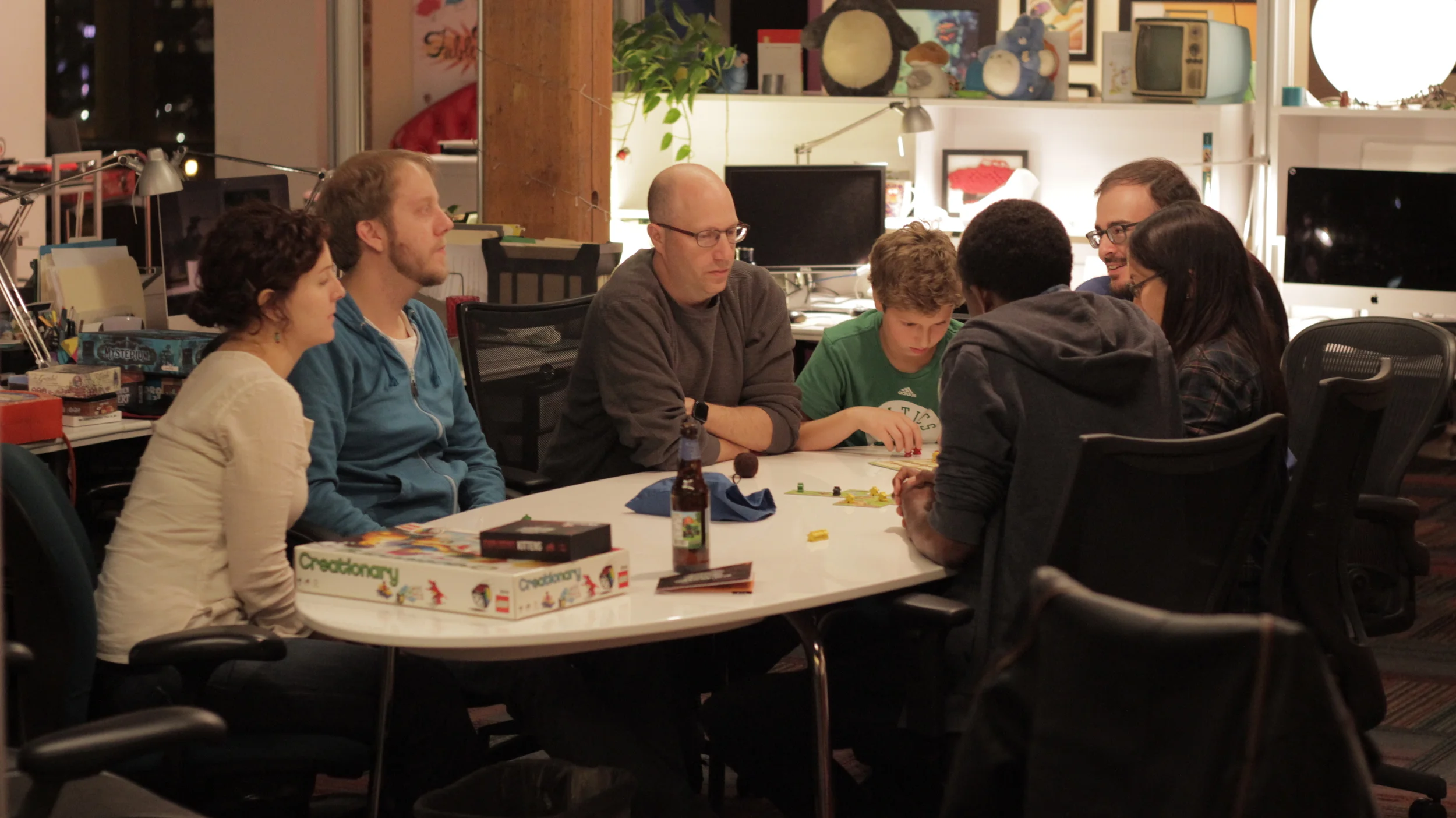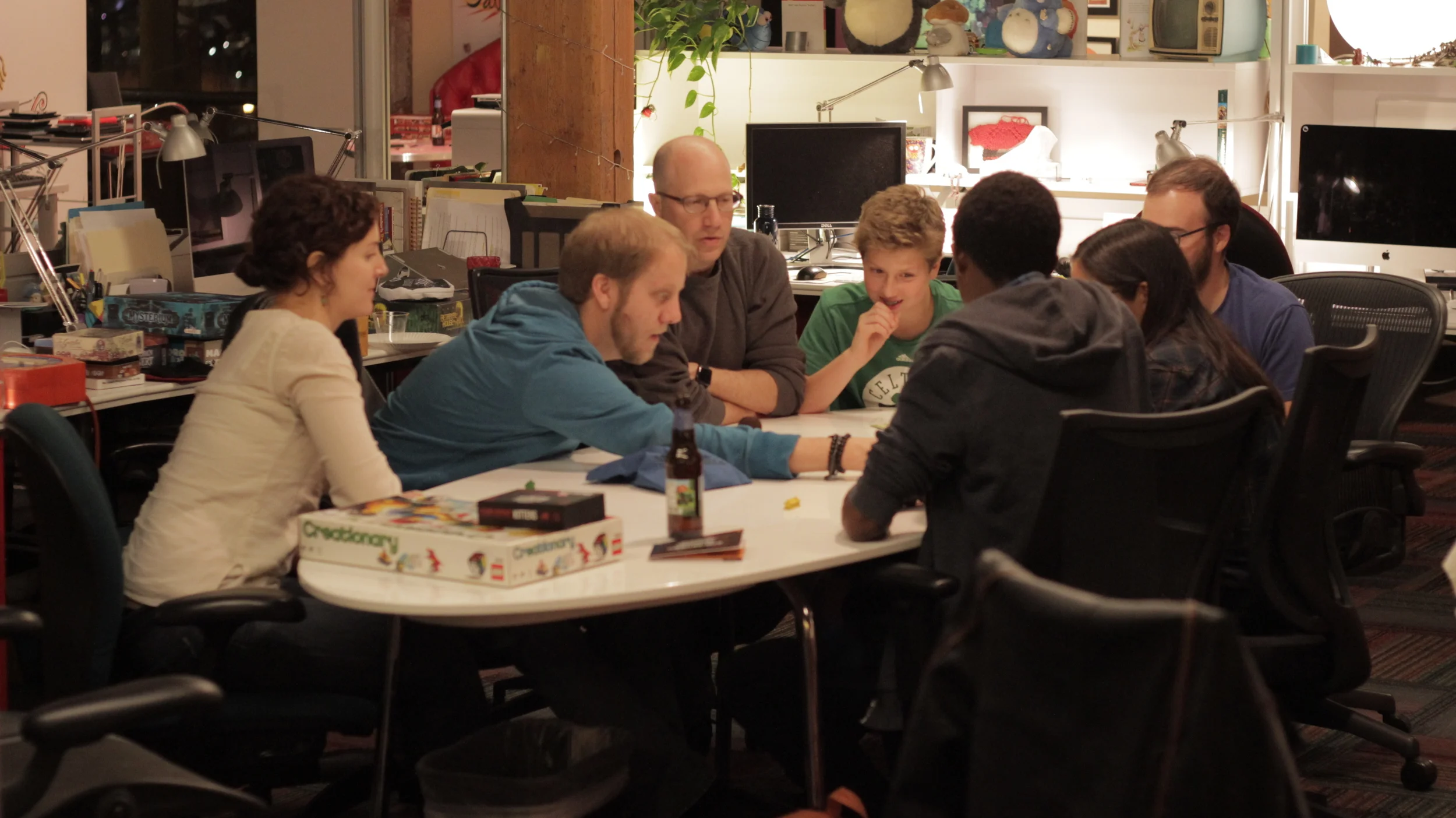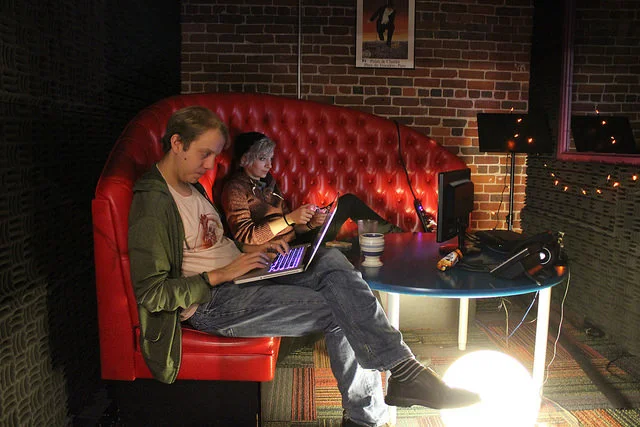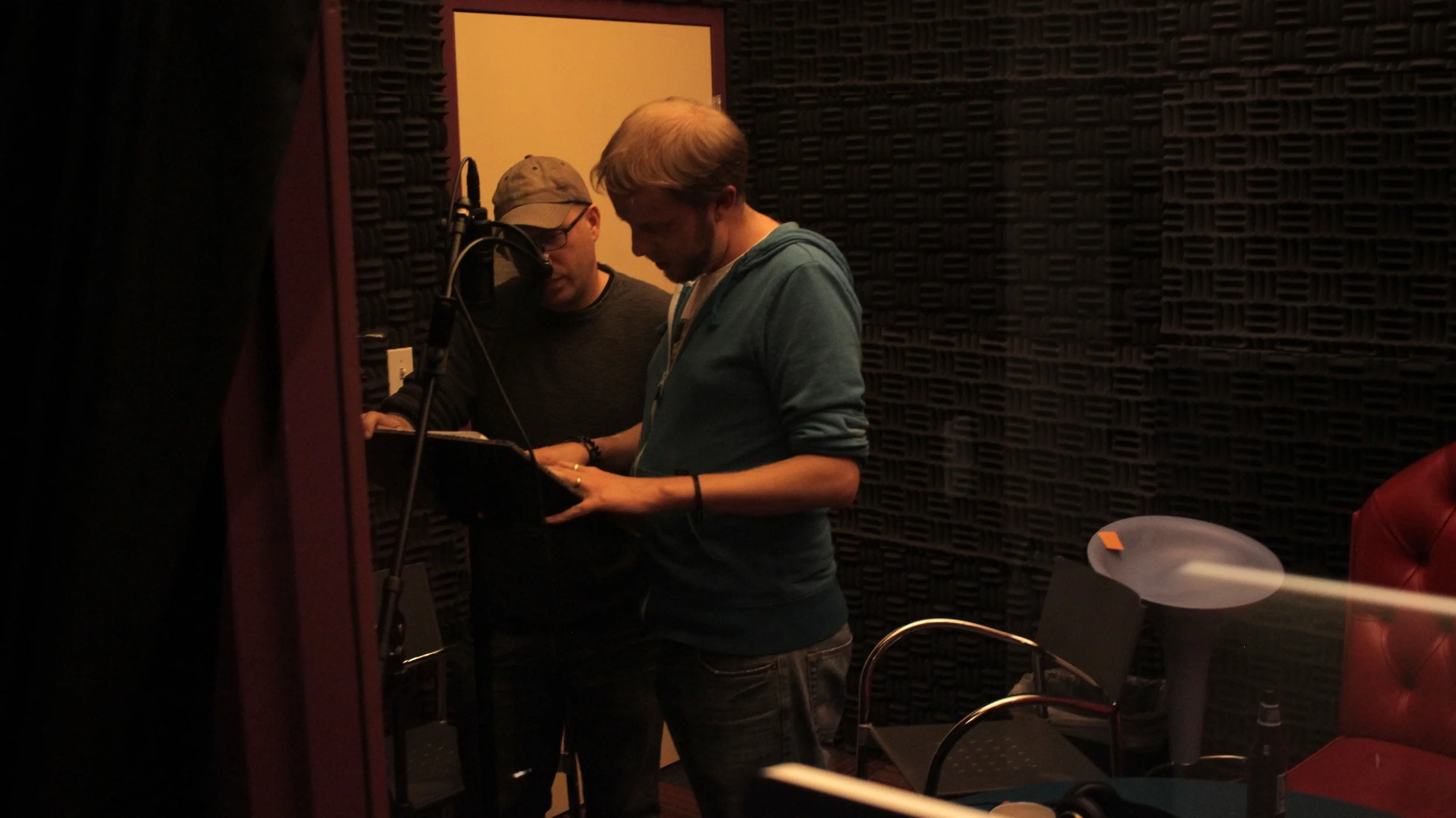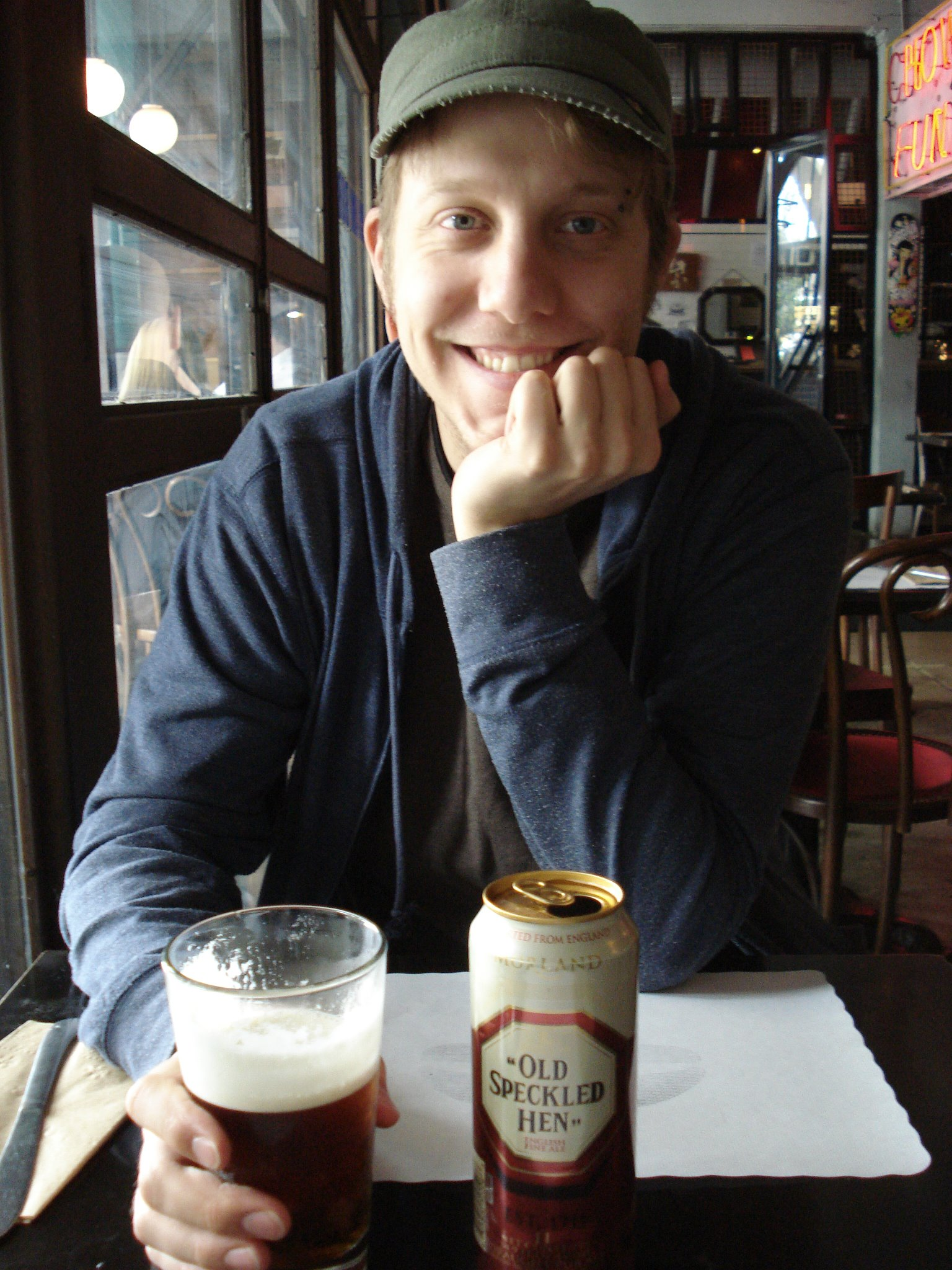Matt Brelsford is the proverbial man behind the curtain – but he’s certainly worth paying attention to. Interested from an early age with “the way things work” and the intricacies of production, Matt joined FableVision’s team as a developer in 2014.
“Being a computer programmer is the closest thing I've found to being a real-life wizard,” Matt says. And his work here at FableVision helps bring the digital worlds we create to life. His background in theatrical lighting, gaming, and a deep-seated interest in an audience’s experience play into his work here seamlessly. Programming and lighting have a lot in common. They direct the audience’s gaze, can help along plot lines, and can have control over how the story as a whole functions on the stage (whether that stage is a literal or metaphorical one).
This month we sat down with Matt to talk about the overlaps in art and technology, the path that led him to FableVision, and a small side project that’s kept him buzzing around our Studio.
Humor us on our first question. Let’s say you’re talking to a five year old. How do you explain what you do to them?
Computers, by themselves, don't do anything. Seriously, they just sit there. However, they are absolutely great at following instructions, and can do things in one second that would take a human a lifetime to do. It's my job to write those instructions. It might sound boring, but those instructions bring games to life, and lets you search for kitten pictures on Google.
Matt and his wife, Jamie.
You have a background in theatrical lighting, can you talk a bit about that time in your life? Why make the full-time switch to programming?
Like many people, I went into college without a clear idea of what I wanted to do with my life. I originally wanted to be an engineer. Then I wanted to do studio art. During freshman year course selection, a lot of the courses I wanted to take were already full, and I wound up taking a theater course. By far, it was the most engaging, interesting class I was taking. I had an absolutely amazing professor, Lynne Greeley, and I instantly fell in love. Lynne was incredibly encouraging and suggested that I continue. She even recommended the class where I ended up meeting my wife, Jamie. The next semester I was taking almost exclusively theater classes, including intro to lighting design with another amazing professor, John Forbes. I was totally captivated. There is something so overwhelmingly magical about controlling light. I still get chills when I think about sitting in the booth behind the audience in a pitch-black room and bringing up the lights on Act 1.
After I graduated, I struggled to find meaningful work in the theater (go figure). I always had an interest in programming and the infinite creative potential of computers, so I did some freelance web development work for friends and local businesses, and I eventually decided to pursue that as a career.
What is your journey to FableVision story?
After doing some freelance web development, I found a job in Boston at a small web development agency. I then worked at two other ad agencies in the city until the desire to something more creative and meaningful became overwhelming. I wanted to make games. At some point, my wife suggested educational games, and something clicked. I found a position at Tufts University where I worked on a grant-funded research project making an educational game about sustainable tree farming. After that, I discovered FableVision, which seemed to be exactly what I was looking for, and applied that night.
You were lead developer on the recently released Top Crop: Farming for the Future, which we created for National Geographic. From a developer’s perspective, what were some of the challenges and successes working on this project?
Developing educational games is always a balance. In the case of Top Crop, we needed to devise creative ways to meet the educational goals of the game, be scientifically accurate, and of course, meet the schedule and budget. You can have ideas that don’t quite fit. I think we have a solid model for what a game can look like without traditional sprite-based animation. And the game looks beautiful. Every time I look at it I am impressed with the game and UI art.
Committee for Children’s ParkPals: Kindness Rules is designed for young kids (7-9 year olds), how did that inform your decisions when working on the project?
When presented with a game, kids tend to ignore text, which means that in order to teach them how to play all of the mini games, we had to show them with visual and audio cues. There were also a number of challenges creating a log-in system that wouldn't require them giving any personal information.
What draws you to FableVision’s mission?
I love the idea that my work is actually doing good out in the world. In my ad agency days, it wasn't uncommon to work for a huge billion-dollar company where you weren't totally on board with what they were doing. It's so motivating to know that I'm helping kids learn about sustainable farming, or how to be fair and responsible.
You have a creative side, how do you approach web development and programming as an art?
I don't know if I would say I “approach programming as an art,” but rather that I am trying to make art using a computer and a keyboard instead of paints and brushes. If there was a more powerful, easier to use medium for making art, I'd switch to that in a heartbeat.
What inspires your creativity?
I wish I knew! It can be anything. Art, movies, games, people, music, books. I guess if I had to pick only one thing, it would be games, since they usually include every kind of creative medium inside of them. However, most of my work starts out not due to some inspiration, but rather as a problem I want to solve, like how to procedurally generate an island, or how to manipulate a webcam feed.
Tell us about the toys, games, and interactive experiments that you make in your free time.
There are a lot of them.
The weirdest one I've made is a small program that, given enough time and space, will generate every possible image ever. All of them. Pictures of you riding a dinosaur through ancient Rome, pictures of Abraham Lincoln break dancing, and lots and lots (and LOTS) of pictures of nothing at all. Unfortunately, generating all of those pictures would take an astronomical amount of time and hard drive space. The formula looks like this: number of different colors ^ number of pixels in the image = total number of images generated.
So for an image that's 256x256 (which is a small image) with only 16 colors (not that many, most computers are capable of displaying millions of colors), you'd get 16^65,536 = ~1.6 × 10^78913. If you could generate 100 of those small images each second, it would still take you ~5.1 × 10^78903 years to generate all of them. I don't have that much time.
Some other, less esoteric things I've made:
- A music visualizer that takes your webcam feed, and distorts it based on the music that's playing.
- A game where time only moves when you move.
- A web application where users can upload children's drawings, and other more “well trained” artists can polish the image. Kids can see their vision realized, and artists have an infinite supply of super creative inspiration.
What is Just B?
Just B came about due to my desire for FableVision to work on our own internal game project. People had mentioned it had been done in the past, but always seemed to fizzle out. I was determined to not let that happen, so I tried to make the absolute smallest thing possible. At some point early in our process, we sat down with our marketing leader, Sarah, and she mentioned doing something to celebrate the springtime. We all liked that idea, so I put something that looked like a Bee on the screen and just started playing. Then I added some flowers. Then I made it so that when the bee ran into a flower, it played a note. We refined it just a little bit more, and that was that. Even though it's one of the smallest projects I've done, it's the one that I'm the most proud of. It's focused, pretty, and it exists for no reason other than to bring joy. Probably the closest I've come to making true "art" with a computer.
Favorites!
Movie: I love most of Wes Anderson's movies, but if I'm being honest with myself, I'd have to say the new Mad Max or the original Star Wars Trilogy.
Snack food: Cheese and crackers
Game to play with a big group: Two Rooms and a Boom
Game to play with only a couple people: Betrayal at House on the Hill
Month: It's a tossup between October and April.
Vacation: I love taking a week off and working on one of my game projects. If I had to pick a real vacation, it would be going to LA to stay with my best friend Greg.
Dessert: German Chocolate Cake
Cartoon character: Tina Belcher, from Bob's Burgers
Play: I really can't think of a favorite. I just loving being in a theater!
Video game: Super Metroid. Dark Souls. Portal. (Not necessarily in that order.)




